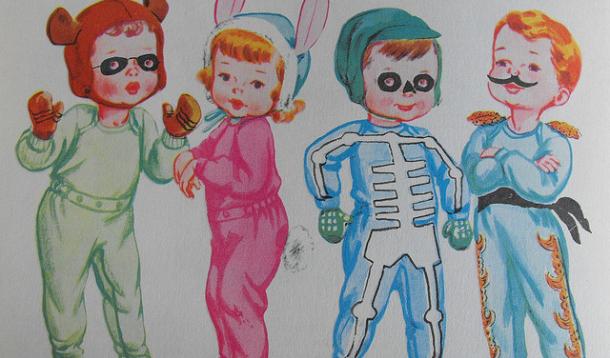
When you think about it, Halloween is a pretty messed up occasion. All year long we drill it into our kids not to accept gifts or candy from strangers—except for that one solitary night when we actively encourage it!
But dressing up and collecting vats of junk food is a rite of passage for children, and those with special needs should be no exception. With a little advance prep, Halloween doesn't have to be a nightmare on Elm (or whatever street you happen live at).
As with other major holidays, organization is key. Start in the weeks leading up to Halloween by creating visual schedules and What To Expect-styled social stories like this one. It took quite a while for my son to get the hang of the trick-or-treat sequence, but now he's hooked. You may even want to stage a dry run at your own front door. (Kids with more severe challenges can still dress up and help greet trick-or-treaters at home.)
Plan your route ahead of time and agree on the number of houses/blocks. Then reiterate the plan as you set off and offer prompts "Two more houses..." when you're winding down. Aim to visit a few neighbours who know your child and are likely to be supportive and understanding. Go out early before it gets pitch black and the streets get overrun with zombies and vampires. Stop while the going is good. Don't wait for your kid to become overstimulated. Believe me, the line between excitable and completely unravelled is one best left uncrossed.
Agree that treats will be vetted and regulated by mom and dad. Afterward, check the loot for any items that pose choking or allergen hazards, before allowing your child to choose one or two treats.
If costumes are an issue (and let's face it, they are for the vast majority of our kids) then a good place to start is with your child's special interest. If there's a particular character they love, say Elsa or Spiderman, then they will be stoked about dressing up. For kids with sensory issues, avoid masks and face paint at all costs. The last thing you need is a meltdown before you head out the door.
Costumes that are loose and can be worn over regular clothing are ideal, because many commercial outfits tend to be made of cheap and scratchy fabric. Cutout or board costumes are less constrictive and can fit around medical equipment like wheelchairs. If it's inspiration you need, look no further than this mom, who concocted the most stunning costume for her little guy with spina bifida.
Unless you are a Martha Stewart type, take your kid to a party store and let him select and try on his own costume. The more input he has, the more likely he'll be to wear the outfit. Best bets involve superhero capes and fairy wings.
This year my son's choice surprised me, yet it was absolutely perfect. When left to his own devices, he chose a comfortable hat and a loose-fitting body suit. Your child may wish to practice wearing his costume around the house and if he's anything like mine, he'll never ever want to take it off, which I'll take as a win.
Any other Halloween tips to share?